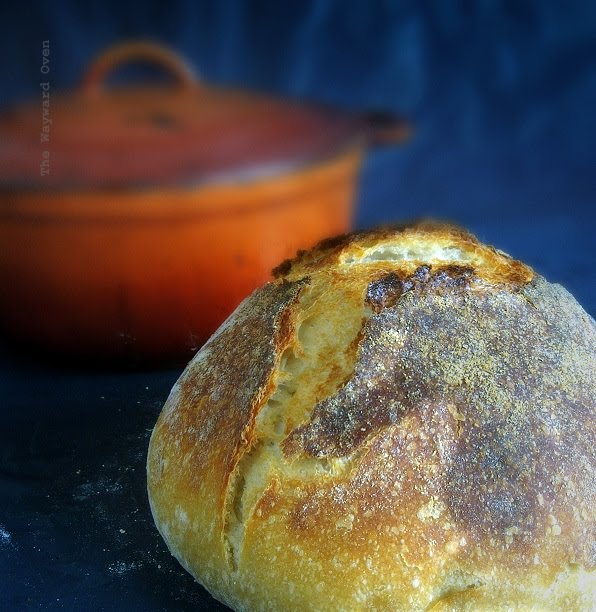 |
| A RATIO TO REMEMBER: 1:2:3 SOURDOUGH |
This means that if I start off with 100g of refreshed starter, I just add 200g of water, 300g of flour (sometimes just white; other times a mixture) and 6g of salt. The percentage of water is only 66%, which makes the bread far from wet and very easy to knead completely by hand. I often use the stretch-and-fold method, but sometimes it's good to get back to basics and go through the full-on "traditional" hand-kneading process.
 |
| Airy and creamy crumb |
The bread is well-aerated, even though the dough isn't that highly hydrated, with a creamy crumb and good chewy crust. I have baked it freestanding on an upturned preheated baking tray with steam from ice cubes, and also in a Dutch oven.
With the Dutch oven, I use a method I learnt from Ken Forkish's book Flour Water Salt Yeast. He lets the loaf proof seam side down in the bread proofing basket and then flips it into the preheated pot so the seam is on the top. As the bread bakes, the crust cracks open naturally. Almost all the breads I've baked this way have come out with a three-point crack. And as the bread cools right out of the oven, there's always a loud crackling!
 |
| The loaf is baked seam side up in a Dutch oven and cracks naturally |

A gorgeous loaf! I have yet to try out sour dough bread baking, rather intimidated by the starter dough part:P
ReplyDeleteWouldn't this be a 71% hydration bread?
ReplyDeleteStarter: 100g @ 100% hydration = 50g flour + 50g water
Water: 200g
Flour: 300g
250g water / 350g flour x 100 = 71% hydration
Hi Abe, you're probably right, but I consider the starter as one entity so I don't include the water or flour in it, and it keeps the math simple for me although it may not be exact. In fact, I keep my mother starter at 80% hydration and weigh out 100g after refreshing 25g starter with 45g water and 55g flour (I put the leftover back into the jar with the mother starter).
Delete